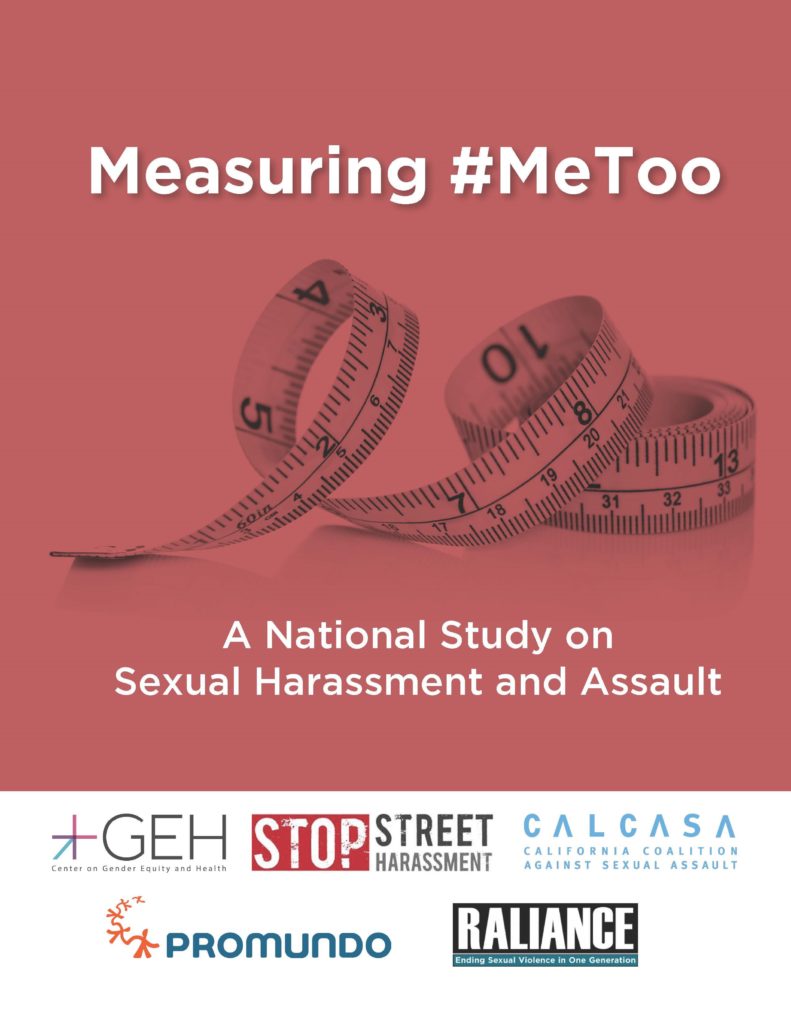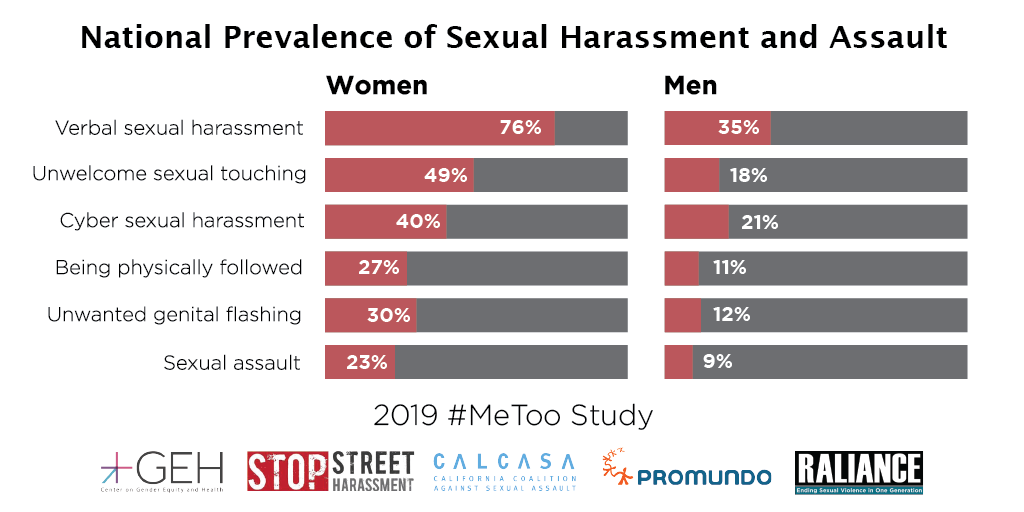 To close out Sexual Assault Awareness Month, on April 30, 2019, SSH, UCSD Center on Gender Equity and Health (GEH), RALIANCE, CALCASA and Promundo released a new joint national study.
To close out Sexual Assault Awareness Month, on April 30, 2019, SSH, UCSD Center on Gender Equity and Health (GEH), RALIANCE, CALCASA and Promundo released a new joint national study.
READ: Full Report | Two-Page Executive Summary | Press Release | Survey Questions | Street Harassment Factsheet
CALCASA and GEH spearheaded a California state-wide version of the study that was released on May 23, 2019. Read the Full Report.
Our national study findings include:
- 81% of women and 43% of men reported experiencing some form of sexual harassment and/or assault in their lifetime. This graph shows the breakdown of the main categories:

- The most frequently was listed location for sexual harassment is a public space, while most sexual assault takes place in private homes or residences.
- Sexual harassment and assault cause people, especially women, to feel anxiety or depression and prompt them to change their route or regular routine.
- While experiences of sexual harassment and assault are highly prevalent, accusations of sexual harassment and assault are very rare.
- Most people who said they committed sexual harassment also said they had experienced sexual harassment.
While we repeated a few questions from our 2018 survey, we chose to add new questions around false accusations this year in light of the Kavanaugh Supreme Court hearing in September 2018 and Department of Education Secretary Betsy DeVos’s recent efforts to change Title IX guidelines.
NORC at the University of Chicago conducted the nationally representative survey of 1,182 women and 1,037 men across February – March 2019. They used the AmeriSpeak Panel. UCSD’s GEH did the data analysis.
MEDIA:
Contact SSH at StopStreetHarassment@Gmail.com for interview requests
